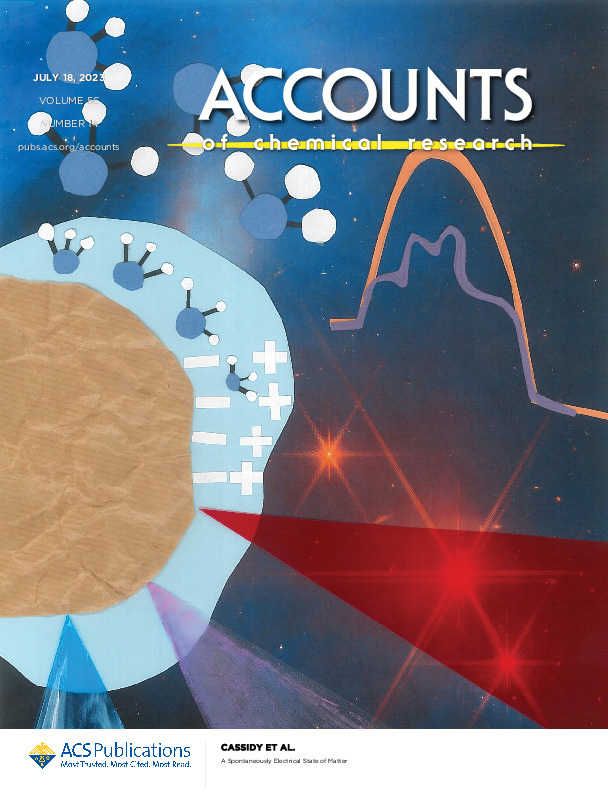New Center Article – Andrew Cassidy
A review on “spontelectric” materials has been published in Accounts of Chemical Research and the story made the front cover of the issue.

Andrew Cassidy, David Field and Martin McCoutra have recently published a review of their work on spontaneously electric materials in the journal Accounts of Chemical Research.
Spontelectric materials are thin films comprising molecules that have a dipole moment. To illustrate, molecular nitrogen (N2) has no dipole moment but carbon monoxide (CO) has a small dipole moment. Such molecules behave like little bar magnets in that if you try to push them close together with their dipoles aligned then they repel each other. Counter-aligned they will attract each other. In most solids, the latter tends to happen as the system wants to minimise the total energy. In spontelectrics, the former happens but we don’t understand why. However, we can measure the consequences as spontelectric materials express a large electric field through the film. This field impacts on the spectroscopy, can be used to study the dynamics of the molecules in the solid, may help explain the presence of resistances in organic electronic films that limit their lifetime and helps us reconcile observations on star formation rates with estimates of rates derived from model; a nanoscale effect impacting on the evolution of the exascale Universe. The review also discusses the techniques used to study spontelectric materials, including synchrotron radiation from the ASTRID2 source at the Department of Physics and Astronomy, AU; neutrons from the SNS source at Oak Ridge National Lab; and IR-spectroscopy from Martin's lab at Heriot-Watt University.
Their work was selected to go on the cover page for the issue, with credit for collaborating on the cover design to Catherine Williams @cjaw_art
